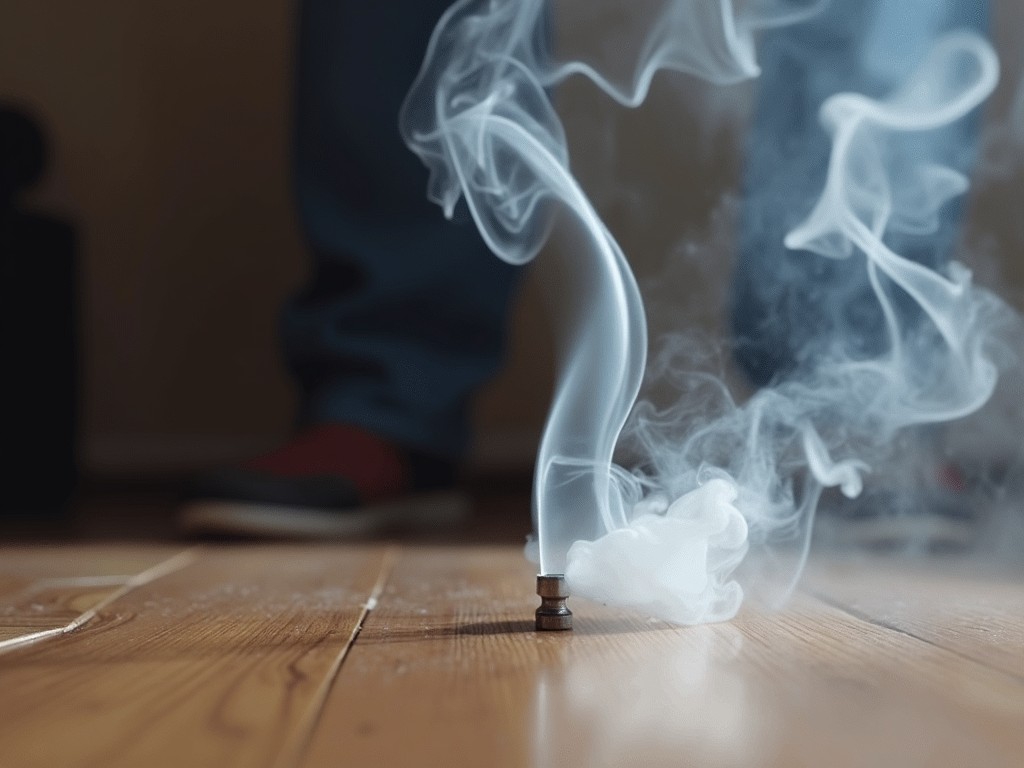
Vaping has become a popular alternative to traditional smoking, offering users a different way to enjoy nicotine and flavored e-liquids without the harmful effects associated with combustible tobacco. One question that often arises among vapers and homeowners alike is whether vaping leaves residue on floors and other surfaces. In this blog post, we will explore the potential for residue from vaping and how it compares to traditional cigarette smoke.
Understanding Vaping Residue
1. What is Vape Residue?
When we talk about residue in the context of vaping, we are referring to any substances that might be left behind after the vapor produced by an e-cigarette or vape device has dissipated. Unlike traditional cigarette smoke, which produces tar and other particulate matter that can settle on surfaces, vape aerosol is primarily composed of water vapor, nicotine, and other chemicals found in e-liquids.
2. Components of Vape Aerosol
Vape aerosol is produced when the liquid in an e-cigarette is heated to create a mist. The primary components of this aerosol include:
- Water Vapor: The main ingredient in vape aerosol, responsible for the misty appearance.
- Nicotine: Present in varying concentrations depending on the e-liquid used.
- Flavorings: These are food-grade additives that give e-liquids their taste.
- Propylene Glycol (PG) and Vegetable Glycerin (VG): These are base ingredients in e-liquids, which help produce vapor and provide throat hit.
Does Vaping Leave Residue on Floors?
1. Minimal Residue Compared to Cigarette Smoke
One of the advantages of vaping over smoking traditional cigarettes is that it generally produces less visible residue. Traditional cigarette smoke contains a multitude of harmful chemicals and tar, which can coat surfaces, including floors, walls, and furniture. This tar can lead to noticeable staining and an accumulation of sticky residue over time.
In contrast, vape aerosol tends to leave behind minimal residue. The water vapor evaporates relatively quickly, and the amount of nicotine, flavorings, and other chemicals in the aerosol is less likely to leave significant deposits. However, this does not mean that vaping is entirely free of residue.
2. Potential for Residue Build-Up
While vape aerosol may not leave visible stains like cigarette smoke, there can still be some build-up over time. This is particularly true in environments with poor ventilation where the aerosol has more opportunity to settle on surfaces. The primary components that could contribute to residue include:
- Flavoring Agents: Some flavorings may have a tendency to leave a slight residue or film.
- Propylene Glycol (PG) and Vegetable Glycerin (VG): Both PG and VG can leave a faint film if accumulated in large quantities, especially in areas with high humidity or inadequate airflow.
3. Cleaning and Maintenance
Regular cleaning and maintenance can help manage any potential residue from vaping. Here are some tips:
- Regular Dusting and Vacuuming: Regularly dust and vacuum floors and other surfaces to remove any potential residue or dust particles that may accumulate.
- Wipe Down Surfaces: Use a damp cloth to wipe down surfaces where aerosol might settle, especially in areas where vaping occurs frequently.
- Maintain Good Ventilation: Ensure proper ventilation to minimize the concentration of aerosol in the air, reducing the potential for residue build-up.
Vaping vs. Smoking: Impact on Surfaces
1. Surface Staining and Odor
Unlike cigarette smoke, which can leave behind stubborn stains and a persistent odor, vaping is less likely to cause such issues. The absence of tar and ash means that vaping does not contribute to the same level of surface staining or lingering odors. However, the flavorings in e-liquids may impart a subtle scent, which might be noticeable in enclosed spaces.
2. Long-Term Effects
Over the long term, the impact of vaping on floors and other surfaces is generally less significant compared to smoking. The lack of tar and combustion byproducts means that the surfaces in a home where vaping occurs are less likely to experience the same degree of discoloration or sticky residue.
Conclusion
In summary, while vaping is less likely to leave residue on floors and other surfaces compared to traditional smoking, it is not entirely free of potential deposits. The water vapor produced by vaping evaporates quickly, and the aerosol contains fewer sticky substances than cigarette smoke. Nonetheless, maintaining cleanliness and proper ventilation can help mitigate any potential build-up.
For those concerned about the effects of vaping indoors, adopting good cleaning practices and ensuring proper airflow can help maintain a clean and healthy living environment. If you have further questions about vaping and its impact on your home, consult with local experts or visit our Online Vape Shop Dubai for more information and quality products.
